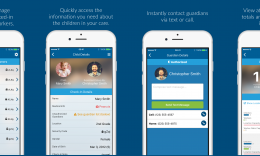Child Safety – Part: 3 Writing and Implementing a Child Protection Policy

Welcome to the third and final post in our “Child Safety” series on the purpose, planning, writing and implementing of a Child Protection Policy (CPP).
Last week, in Part 2, we looked at the process of planning and creating your own personalized CPP. We shared that all CPPs are unique and will look different for each organization. Lastly, we outlined how to get the process started and the items that should be taken into consideration when designing a good policy.
This week we’re going to look at the steps involved in the writing and implementing of a new CPP. Whether you’re updating an existing one, or creating something new, this post will outline the key steps to think through in this final phase.
Please note…these final steps often pose the most challenge, and you may encounter some resistance. This is normal. Be patient and stay connected with other leaders in your organization that understand the importance of increasing child safety to prevent abuse. Their support will go a long way in keeping you motivated to press on.
Say What? A Leadership Conversation Strategy
Leadership conversations should center on abuse prevention and the moral and legal responsibility of protecting the children in your care. In addition, it’s helpful to share concerns about false assumptions, church liability, and other fears.
For this step, preparation is the key for getting by off! Being equipped for the discussion means being able to respond to all possible questions, articulate current supporting abuse facts/data, and alleviate fears on how a new or updated policy will disrupt the current environment.
It’s understandable to feel like these conversations are difficult, especially since most people who focus on children-centered professions prefer to shy away from conflict. You CAN do it! There’s too much at stake not to, and operating without a CPP is a recipe for disaster.
To be equipped, write down all the anticipated questions that might come up and practice answering them. Listed below are some common ones to add to your list:
Listed below are examples of questions you may encounter:
- Can abuse really happen in our church? Everybody knows everybody.
- Sexual predators are not anything like us – Why would they target our church?
- Our church is safe – why do we need to do more to protect the kids?
- What is your primary purpose for trying to affect change?
- Will the new policy discourage people from volunteering or becoming more involved?
- What type of screening will the new policy require? How often and to what level will individuals have back ground checks performed? How much will this cost?
- What legalities need to be considered?
- Will a new or updated policy mitigate risk for the church?
- How will you train and educate the staff, volunteers and leadership on the new policy(s)?
- Who will make the final decision on volunteer participation?
- How will you measure success?
- What will be your top 3-5 key metrics for evaluation?
Share the News…
The next step is to educate and inform volunteers, staff, and the whole church community on the issue of child abuse and the steps you’re taking with a CPP to prevent anything from happening. Ignorance is a top reason abusers get away with what they do. The goal in this step is to build consensus. Be candid and direct, keeping in mind, this is a tough topic that people often don’t want to discuss.
By simply starting the conversation regarding abuse prevention, you will deter individuals with malicious intent on their minds. If predators know that abuse prevention is becoming a top initiative in children’s ministry, they will be less likely to feel confident in their abilities to offend.
Vehicles for communication may include, but are not limited to, informational seminars, newsletters, social media, weekly sermons, bulletins, inserts, flyers etc. Use whatever means is available to you to get the word out.
Let the Games Begin…
After you have received approval to proceed on a new CPP, the hard work begins. Writing or rewriting your policies is a large task. Have no fear! It’s good to do some investigation and see what other churches are doing. You might also want to check online for some sample policies. Just remember your CPP will be unique to your situation, goals and objectives.
Some organizations find it helpful to form a team or committee which might include church leaders, parents, first-responders, teachers, and other professionals to tackle the input and writing detail of a policy. However, this can be inefficient and not very effective. It’s better to assign a lead-writer; this may or may not be you, who can gather input from team/committee members for the first draft of the policy.
Once the initial policy has been drafted, complete with input from team/committee members, and before you present it to leadership for the final approval; it’s important to run it by your church’s legal counsel and insurance company as they may have input or specific criteria that needs to be met.
Be In the Know
Once you have rolled out the new CPP, it’s important to educate, or re-educate, everyone who will be responsible for carrying out the guidelines of the policy. Whether you choose to have one-long training, or a succession of short weekly meetings, the information needs to be shared, expectations understood, and questions answered. It’s important for the first 30-60 days that you be available to field questions and clarify the details.
Measure the Success
Once your policy has been in place for some time, it’s important to evaluate and effectively measure the success. It’s recommended that you have 3-5 success metrics defined that you can share with leadership a few times each year. This keeps the need for prevention fresh in their minds and helps them to know they did the right thing by approving the CPP. Providing leadership with data they can share on the effectiveness of your policy is always a positive thing and demonstrates that child safety is a top priority for your organization.
There’s Always Hope
Now that you’ve read this whole series, if you’re feeling motivated to create or revisit an existing CPP -that’s great. Our hope is that you will never have to use one; sadly, the realities of our world regarding child abuse are disturbing. In the end, the main point is for you to take action against the threat of abuse.
While nothing is 100% fullproof, there is something to be said for being equipped and alert. God provides the knowledge we need to serve children with confidence and integrity, but we must act. Serving children is not for the faint of heart, and ultimately we must not be driven by fear, but inspired by trust from the One who has called us.
To learn more about improving child safety, additional security tips, and best practices visit the KidCheck blog or connect with us on Twitter, Facebook, Google+ or Pinterest.
Sources: On Guard – Preventing and Responding to Child Abuse at Church by Deepak Reju, Preventing Child Abuse by B. Swagman, Myersbriggs.org, urbandictionary.com, and projectimes.com


